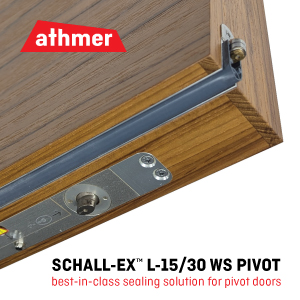New PGTI Facility to offer thin glass products and systems to window and door manufacturers

Last week, Triple Diamond Glass, a brand of PGT Innovations, welcomed industry members to a pre-opening tour of its new manufacturing facility located outside of Richmond, Virginia. The 291,000-square-foot plant, formerly owned by Rolls Royce, will initially supply its Tri-Ultra thin triple insulating glass units, and Diamond Glass laminated glass units, the latter of which is manufactured with a traditional soda lime glass lite laminated to a thin glass lite. PGT Innovations has partnered with Corning to use its Architectural Technical Glass as the thin glass lite in these products “We’ve been talking for years about innovation in IG,” said Bob Keller, senior vice president of product innovation. “We finally have innovation that you can see here.”
New factory to ship glass nationwide
Industry members were treated to a tour of the factory, which will employ about 500-600 employees when fully staffed. The IG line will use thermoplastic spacer technology from H.B. Fuller, and will produce doubles and triples, with the potential for quad-pane IGUs, said Keller.
The Richmond facility will ship to window and door manufacturers nationwide.

New products fulfill glass industry challenges for energy efficiency, security and more
PGTI’s initial interest in thin glass was not due to energy efficiency, but rather the company’s focus on impact glazing. Based in Florida, 80% of the company’s finished products are impact-rated, which means systems with more glass. And the local style trends toward larger-size systems. “Florida homes want big stuff,” explained Keller.
Heaviness can lead to issues with glass handling and installation. “In an impact window, the weight is in the glass,” explained Keller. “We needed to make a window that is the same weight as a non-impact window.” This led to partnership with Corning to explore thin glass’s potential at jumbo sizes.
The acceleration of energy efficiency codes and standards spurred the company to experiment with thin triple technology. The more stringent criteria of Energy Star 7.0, especially in the northern regions, has been a major market driver for thin triple IGU production. Traditional barriers to adoption include the added thickness of a triple using standard lites, which would require a redesign of framing and hardware, something that thin triples could make unnecessary.
Triple Diamond Glass officials explained that thin glass products could be a solution for the increasing push toward retrofit in many areas of the country; the thin glass products can be slotted into existing frames. “The purpose of this new glass company is to utilize thin glass technology to solve problems in the window industry,” said Keller.
The company is also exploring potential applications of thin laminates for security applications, in both residential and nonresidential construction, especially school security. “There’s increasing demand for security, but also a need to maintain energy efficiency,” said Keller.
As of now, existing codes do not offer clear guidance for thin glass products and are considering changes. Recently FGIA has approved an exception to allow use, guided by LBL research. This research allows thin glass center lites to be used if it is calculated to be a insignificant load share and FGIA will permit use in window certification. Given the increased abundance of thin glass (in TVs and cell phones, for example), PGTI officials are expediting research and testing to expand certification of windows doors and skylights with thin triple insulating glass products.

